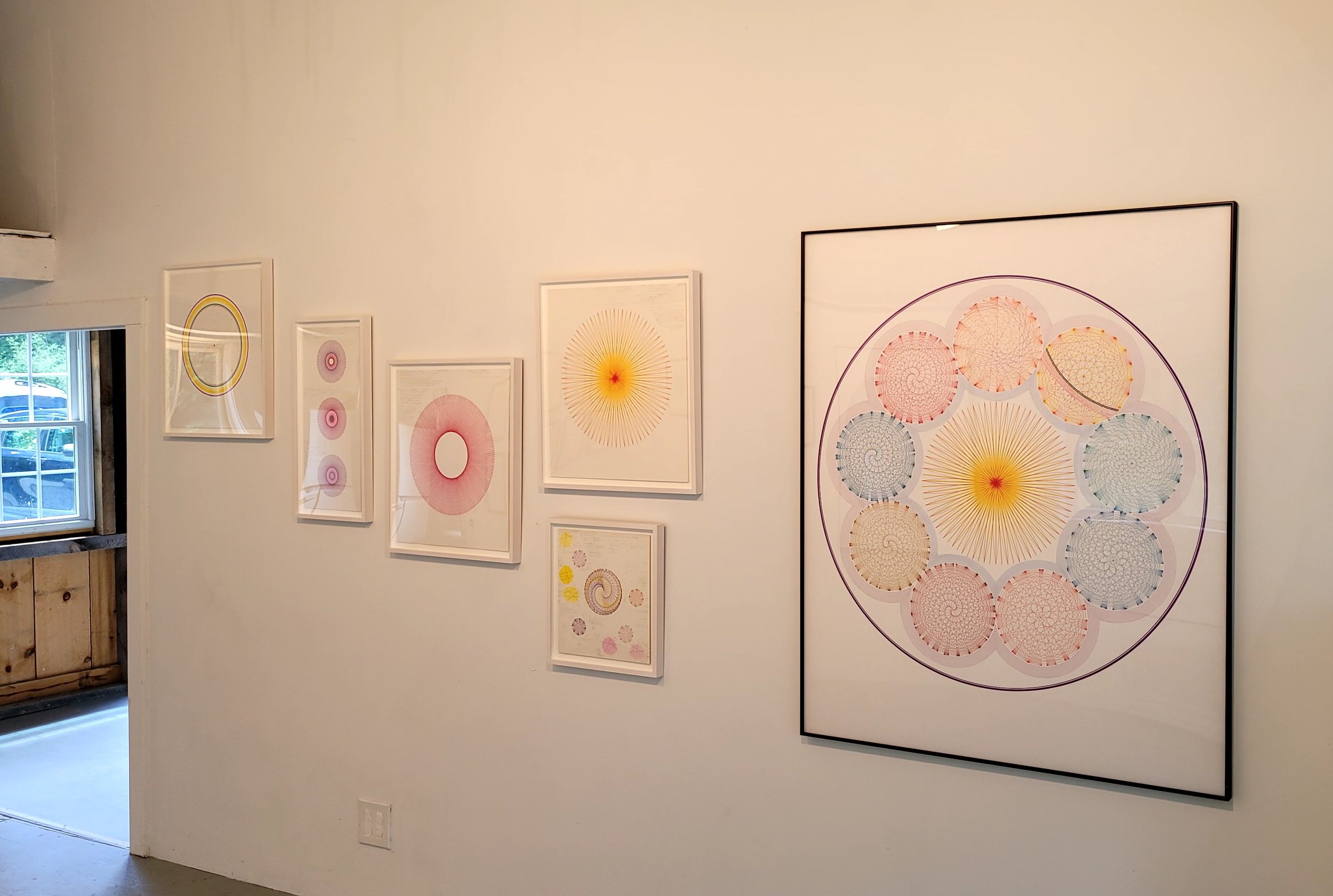Geometry
Harold Granucci
June 6th - July 19th 2022
Opening Reception: Saturday, June 11th, 5-7pm
Gallery Talk and Brunch: Saturday, July 9th, 10-12pm
PHOTOS AND PRICES
Harold Granucci ‘Geometry' - Press Release
He who binds to himself a joy
Does the winged life destroy
But he who kisses the joy as it flies
Lives in eternity's sunrise. ~William Blake
The incredibly detailed drawings made by Harold Granucci still burn the gaze, seemingly from within. The artist used Rapidograph pens on board delving into mathematic systems and equations, giving them visual space to exist in. Commencing with exacting studies, the artist’s goal was to make larger versions of these works expanding his diagrammatic process to sizes often up to 4 feet tall. Geometry looks at a selection of Granucci’s work as the litmus test of his practice.
Drawn to intricate symbolism and systems, he often looked at the planetary alignments found in the universe, yin and yang, golden triangles, and sacred circles. While all these interests may often be closer associated with science and architecture, Granucci’s fascination with mathematical equations found in both manmade and natural shapes provided the opportunity to make his art in a slow, but very specific and sensitive way. We are all familiar with Leonardo DaVinci’s visual exploration of the golden mean, as the perfect equation for perspective. Da Vinci was led to this perspective by his innate study of the Greek philosophers and the Fibonacci number series, named after the Italian mathematician Leonardo di Pisa, later known as Fibonacci. Looking intently at Harold Granucci’s drawings one can easily see proof of the artist’s fascination with patterns. In fact, the golden mean was a way to describe or rather understand predictable patterns found in everything from the smallest atoms to the star clusters that make up the galaxy.
There is a unique beauty in each of his patterns. Using precise, intersecting lines the drawings in the early parts of his practice were mostly made in black and white. The simplistic, clean lines allow for little distraction and focus solely on the linear quality of each line, and offer an optical illusion of space. While Granucci’s
lines appear to curve in beautiful, almost romantic ways, each of his lines are actually straight and through a series of overlapping gestures, a flat surface comes to life. When at the height of his practice, the artist spent up to 8 hours a day drawing in his studio. A few years after his black and white drawings were inaugurated, he delved into color. Using colors technically found in everything (ROYGBIV) that make up the prisms we see in rainbows, the artist took to colored ink taking his patterning to another conceptual level. He made a series of whorls, or concentric circles and spirals, a shape known within the math community but also in botany.
One of the most fascinating components of mathematics —numbers, sequences, and solutions— and the shapes that Granucci created can also be found in nature. Mathematicians discovered such patterns in the way that tree branches extend from a tree trunk or petals that form around the center of a flower. Perhaps two of the most well-known shapes in nature that emulate the mathematical equations researched by Granucci are the crown of a sunflower and the Nautilus shell, such as found on a snail.
As an artist, Harold Granucci made intricate sketches that exist on paper —colorful examples of his mind at work. Every pen stroke intends to specify reason and space as well as illustrate a way of moving from point A to point B. Yet the difference between art and math can vary wildly. While in his lifetime, the two methodologies of thought intertwined, Geometry could be considered a turbulent way for one to find complete and symmetrical order.
INSTALLATION PHOTOS





